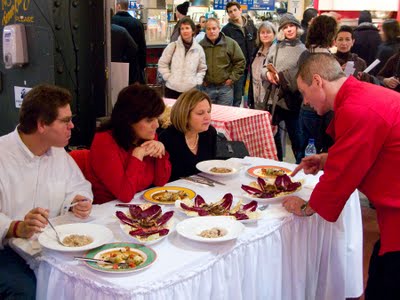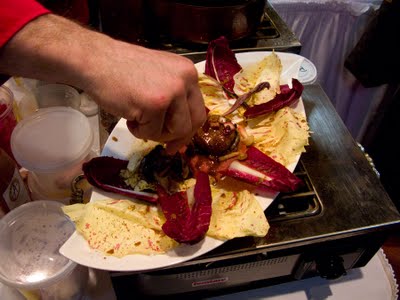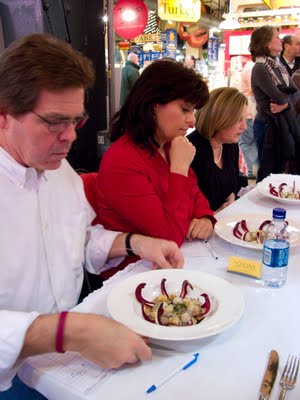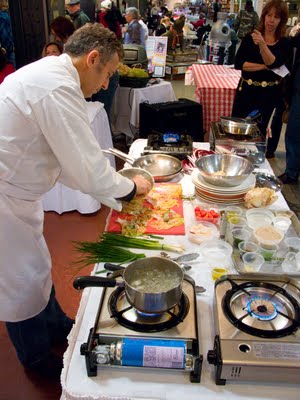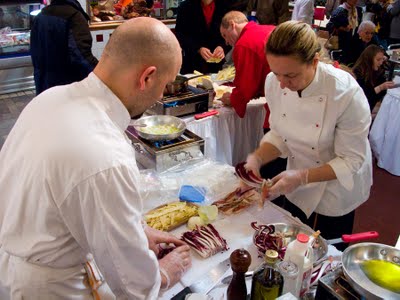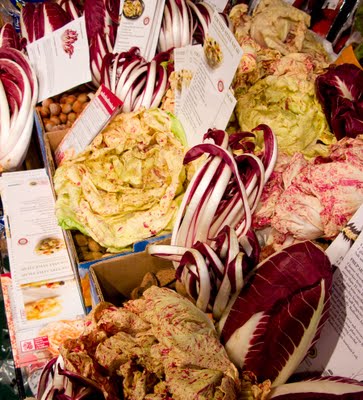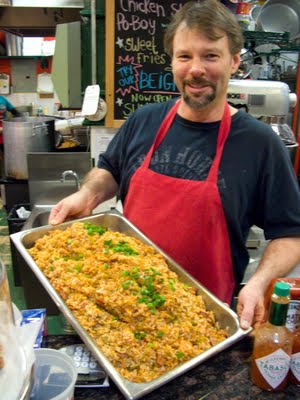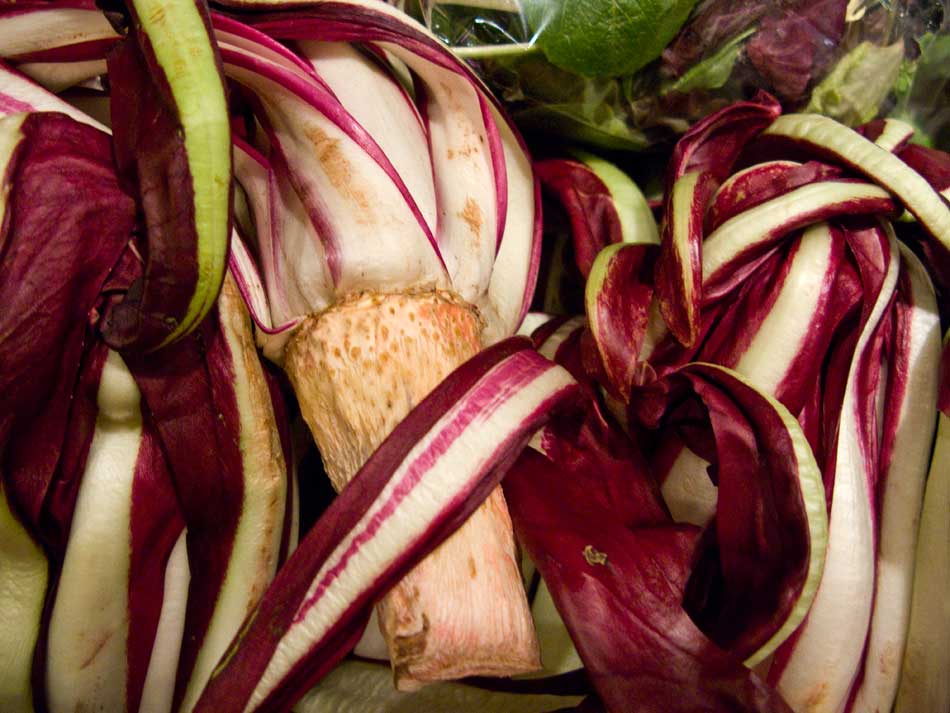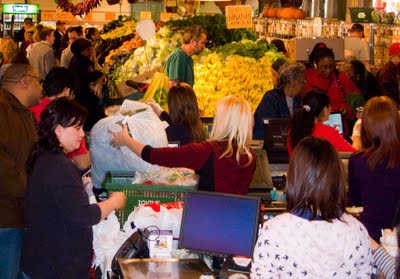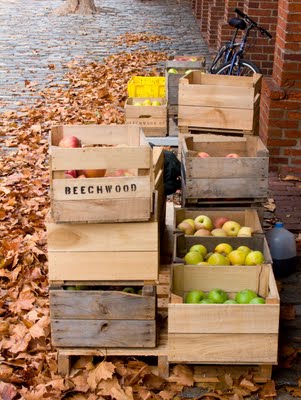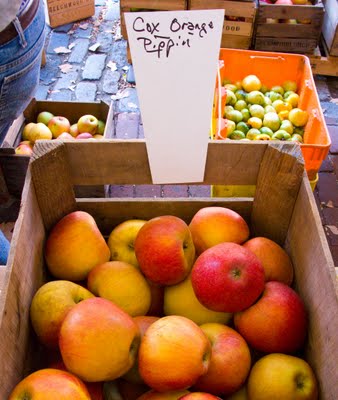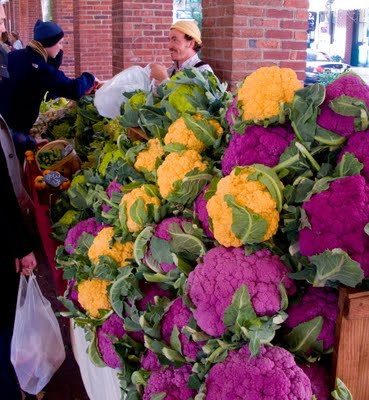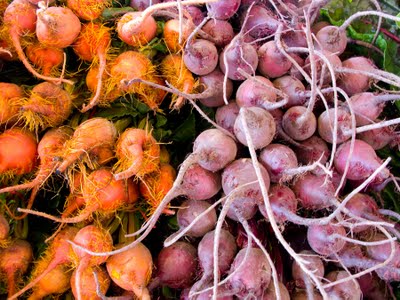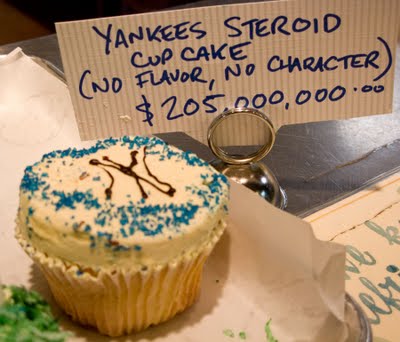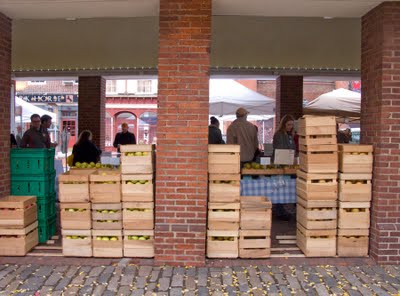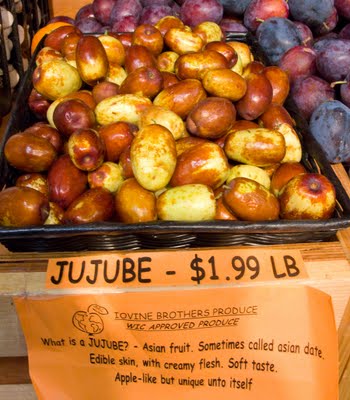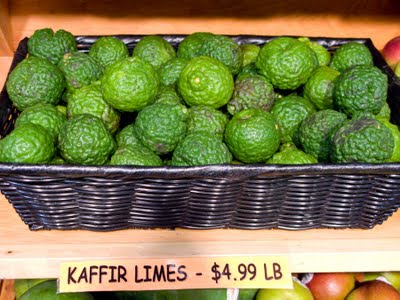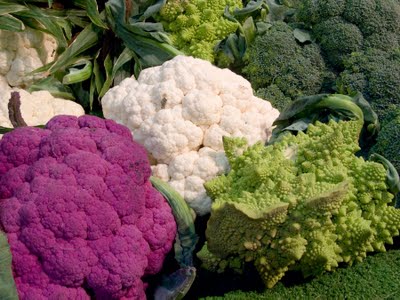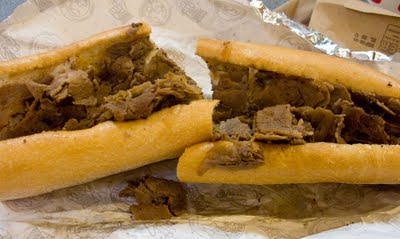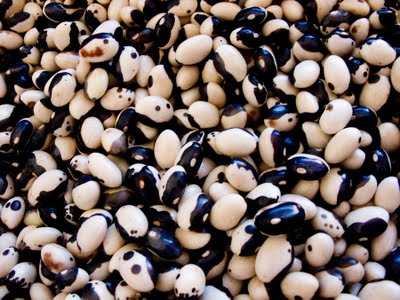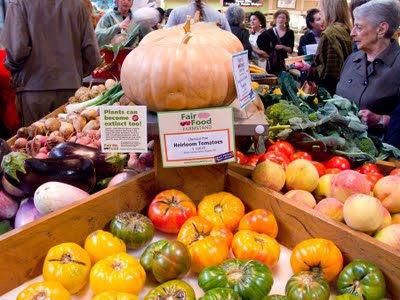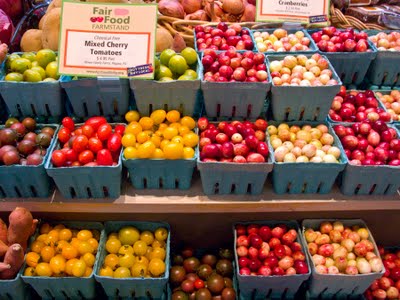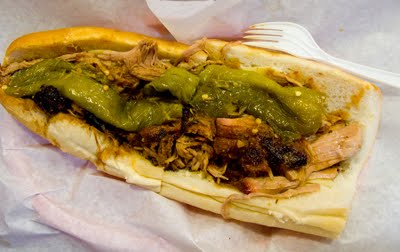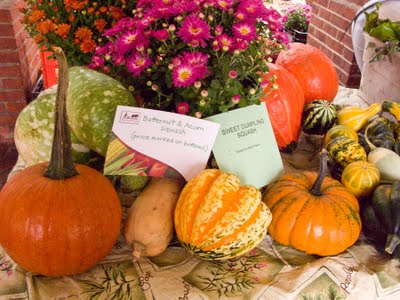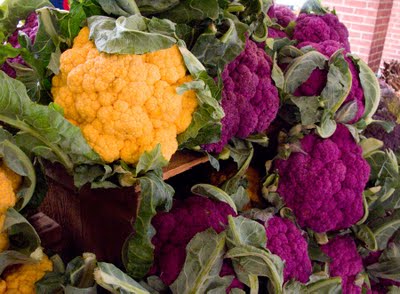Brisk Business at FarmstandSince opening at its new location within the Reading Terminal Market Wednesday, the Fair Food Farmstand has been doing brisk business. Although long-term trends cannot be divined from just three days' business, manager Sarah Cain reports increased traffic and revenue. Weekly volume should be bumped up when the stall begins seven-day-a-week operation Oct. 5; in recent years it has been closed on Mondays.
While much of the business has been from regular customers, many are new, including a few clueless folks who said they never knew the Fair Food Farmstand existed at its previous location within the market.
Don't expect to be able to order a quiche, sandwich or salad for consumption at the RTM from Fair Food anytime soon. Although Fair Food plans to eventually use some of its prep space to create items for lunchers and munchers, RTM General Manager Paul Steinke said serious talks about adding the additional line of business haven't even started. Fair Food didn't elect to hook up to the market's extensive exhaust and ventilation system, so they definitely won't be making cheesesteaks or roast pork sandwiches. But expect items that could be prepped and cooked in a convection oven, sandwich press, induction stove top and similar small appliances.
Other Vendors Spruce UpConvex display cases are all the rage among merchants at the Reading Terminal Market. If I recall correctly, it started when John Yi redid its cases a year or so ago. More recently the new meat seller, S&B, installed similar cases. Over the last month L. Halteman and Termini's updated their stalls with the attractive cases.
At Termini's, the refrigerated cases greatly expands capacity to store and sell pastries requiring refrigeration. Stop by and you'll see a much larger selection of cakes and other goodies that must keep their cool.
Produce ReportIf you want some paw paws, you'll save plenty by buying them at Earl Livengood's in center court vs. Fair Food. Both come from the same source -- Lancaster hunter-gatherer Sam Consylman who forages for them along the banks of local creeks -- but Earl's are sold for $3.95/pound, vs. $6.50 at Fair Food. No matter where you buy them, select the blackened, soft ugly ones if you plan on eating them in the next day or two. They've got to be mushy to be good. They will, however, ripen on the counter top. Paw paws can be eaten fresh, but their highest use is in ice cream, puddings, cookies or other baked goods. For recipes, see the
web collection of Kentucky State University.
In addition to the paw paws, Fair Food had French breakfast radishes, $2.50/bunch. Kabocha squash was $1.95/pound, all others $1.75. They've still got yellow peaches, $1.75, and both heirloom and cherry and grape tomatoes. The first rutabagas of the season are $1.50/pound. Also in stock are canned peaches in light syrup from Three Springs Fruit Farm (a regular vendor at Headhouse); I stocked up on these delicious canned goods last winter. Fair Food also has South Jersey canned tomatoes.
Kauffman's Lancaster County Produce still has corn, 50-cents an ear. Broccoli and cauliflower are $1.75 and $4.95 a head, respectively, red sweet potatoes $1.99/pound, whites $2.49. Large concord grapes are $2.50/pint.
Corn, peaches, raspberries, tomatoes and lima beans are finishing out their season at Livengood's, but cool-weather greens are in abundance, as are Earl's potatoes. Chestnuts made their apperance last week for the first time, $2.95 for a half pint; the local chestnuts are a tad smaller than the large Italian imports we should start seeing soon.
I picked up some halibut filet at John Yi's for dinner tonight. I couldn't resist: the firm, snowy sides from Canada were priced at a relative bargain $12.99/pound. Porgys were $3.99, mackerel $2.99 and sea bass $5.99. I'll probably bake the halibut in foil with sweet red pepper julienne and herbs tonight.
I'm no pasta maker, so I rely on packaged dry product for most of my consumption. But every year at this time I indulge in pumpkin ravioli from Pasta by George. It's not cheap ($10.99 for a dozen), but it is good. They'll serve as the first course tonight in a brown butter sage sauce.
 Following yesterday's funeral mass and interment of Harry Ochs, friends, family, merchants and customers gathered at the Reading Terminal Market to remember the "mayor of the market".
Following yesterday's funeral mass and interment of Harry Ochs, friends, family, merchants and customers gathered at the Reading Terminal Market to remember the "mayor of the market".
